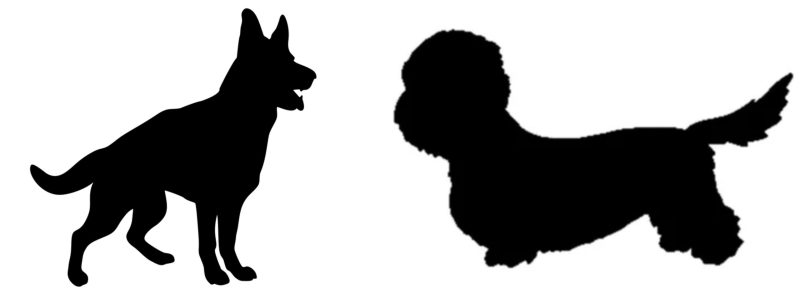
Live long enough, and chances are you will see a “redux” of old trends become new again. It happened when designers brought back madras first introduced in the 60s. Ladies saw it when loose, breezy shift dresses showed up on mannequins. And to our everlasting relief, oversized sunglasses replaced the little Windsor glasses that only John Lennon and Mahatma Gandhi could pull off.
Curiously, there is one fashion trend we have yet to see resurrected: Petticoats, and the dresses that called for them. Go figure.
We went down this rabbit hole after reading that curvy lines are making their way into the interior design scene again. Replacing the angular lines of late are shapely, funky lines, but in a way that feels more modern, this according to Heather Bien writing for Martha Stewart online.
Naturally, reading about furniture made us think of dogs.
While grooming can be subject to trends, it is a tribute to preservation breeders who have largely maintained the lines of their respective breeds. Speaking of curves, we wondered: Are there breed standards that call for ‘curves’ in the General Appearance section of their standards? Many standards use the word, “curve” to describe tails, heads, etc. and we found standards that mention curves with regards to the dog’s body, but we were looking for standards in which the word appears in the general description section. Why? Because it is this section that often sets the tone, so to speak, for what to expect in the rest of the standard.
So are there? Breed standards, that is, that call for ‘curves’ in the General Appearance section of their standards?
There sure are, but we found only two.
From the General Appearance section of the German Shepherd Dog‘s AKC standard: “The dog is longer than tall, deep-bodied, and presents an outline of smooth curves rather than angles.”
The Official Standard of the Dandie Dinmont Terrier’s General Appearance section writes: “Originally bred to go to ground, the Dandie Dinmont Terrier is a long, low-stationed working terrier with a curved outline.”
Mind you, there are standards that mention curves with regards to the body, but we were looking for standards in which the word appears in the general description.
Apologies to the owners of both breeds for an image that isn’t to scale, and neither a good representative of breed type.
